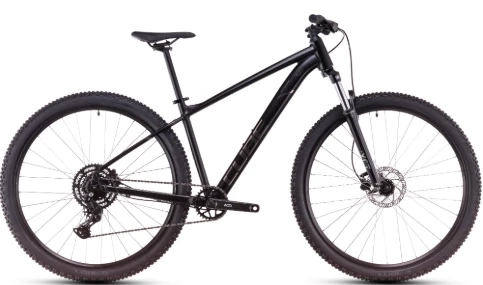Ireland’s landscape is beautiful but challenging: rolling hills, unpredictable winds, and constant rain. For commuters, students, or eco-conscious riders, the idea of switching to an electric bike (e-bike) sounds great, but is it practical?
This guide answers one of the most common questions we hear:
Do e-bikes really work on Ireland’s steep hills and windy roads?
With real-world examples, expert advice, and local context, this article will help you decide if an e-bike suits your commute, lifestyle, and location in Ireland.
Can E-Bikes Handle Steep Hills in Ireland?
Yes, quality e-bikes are built to climb hills efficiently and comfortably. Here’s why:
1. Electric Motor Assistance
E-bikes come with pedal-assist motors that automatically give you a power boost when climbing. This helps reduce fatigue and sweat, especially on long or steep inclines like those in Cork, Wicklow, or rural Kerry.
2. Choose the Right Motor
Not all motors are equal. For Irish hills:
- Mid-drive motors (e.g., Bosch, Shimano) = Better for hills
- Hub motors = Cheaper, but struggle on steep gradients
Look for motors with 60Nm or more torque for best hill-climbing ability.
Example:
A rider commuting from Salthill to Galway city says her mid-drive e-bike “turns hills into flat roads.”
Do E-Bikes Perform in Strong Winds Like We Get in Galway or Donegal?
Absolutely. E-bikes shine in headwinds by providing consistent motor support, making them perfect for Ireland’s blustery coastlines.
1. Headwind Resistance
With pedal-assist, the motor adds power to offset wind resistance. You’ll maintain a steady pace without exhausting yourself.
2. Stable Frames & Tires
Many Irish roads get windy and slick. E-bikes with wider tires and a low center of gravity handle gusts better than regular bikes.
Real Feedback:
Commuters in Galway report 35–50% faster trips on windy days using e-bikes compared to pedal-only bikes.
Are E-Bikes Safe and Durable in Irish Rain?
Yes—but only if you buy a properly rated model. Ireland’s wet climate demands water-resistant components and regular care.
What to Look For:
- IP65+ weather rating (protects against rain/spray)
- Hydraulic disc brakes for safer stopping in wet conditions
- Fenders and mudguards to stay clean
Quick Maintenance Tip:
Wipe down your e-bike after rain, keep the drivetrain clean, and store it indoors when possible.
Good to Know:
Most battery units are sealed and weather-resistant, but avoid submerging them or storing them outdoors long-term.
How Far Can an E-Bike Go on a Typical Irish Commute?
Most e-bikes cover 50–100 km per charge, depending on:
- Assist level used (Eco vs Turbo)
- Terrain (flat vs hilly)
- Wind resistance
- Battery size
Charging:
- Full charge takes 4–6 hours
- Costs less than €0.10 in electricity
- Many riders only charge every 2–3 days
What Type of E-Bike Is Best for Irish Conditions?
When choosing an e-bike for Ireland’s unique mix of hilly roads, wet weather, and windy commutes, consider the following types:
1. Hybrid E-Bike
- Best for: City commuters and suburban riders
- Combines features of road and mountain bikes
- Comfortable upright riding position
- Usually comes with fenders, racks, and lights (great for rain and visibility)
- Ideal for mixed terrain – paved roads, light gravel, and hills
2. Electric Mountain Bike (e-MTB)
- Best for: Rural areas, steep hills, and off-road use
- Powerful motors with high torque (60–85 Nm+)
- Wide tires for grip on wet or uneven terrain
- Excellent suspension for bumpy country roads
- Slightly heavier and more rugged – great for counties like Kerry, Donegal, or Wicklow
3. Folding E-Bike
- Best for: Urban commuting and public transport users
- Compact and portable – fits on buses, trains, or under desks
- Lightweight, ideal for apartment living in cities like Dublin or Limerick
- Shorter battery range, but perfect for quick city trips
4. Road or Gravel E-Bike
- Best for: Long-distance commuters or fitness riders
- Lightweight frames and efficient on smooth roads
- Less comfort but high speed
- Not ideal in heavy rain or poor roads unless properly equipped
Bonus Tips:
- Look for hydraulic disc brakes for wet-weather safety
- Choose mid-drive motors if you live in a hilly area
- Prioritize weatherproof features like fenders, lights, and waterproof cables
Brands Popular in Ireland:
Are E-Bikes Affordable in Ireland?
Yes, especially when you factor in commuting savings and government incentives.
Cost Breakdown:
- Quality e-bike: €1,500–€3,000
- Charging cost: Less than €20/year
- Maintenance: €100–€200/year (less than car servicing)
Bike to Work Scheme:
Get up to €1,500 tax-free towards an e-bike if you're employed in Ireland.
Key Takeaways
- Yes, e-bikes work extremely well in Ireland, even in the wind, rain, and on hills.
- Mid-drive motors and good torque ratings are crucial for steep roads.
- Rainy commutes are no problem with weather-rated components.
- Long-range batteries make e-bikes perfect for commutes of up to 100 km.
- With tax savings and low running costs, they’re a smart alternative to cars.
Frequently Asked Questions (FAQs)
1. Can I use an e-bike legally in Irish bike lanes?
Yes, e-bikes with pedal-assist up to 25km/h and motors under 250W are fully legal in bike lanes.
2. Do I need a license or insurance for an e-bike in Ireland?
No license, tax, or insurance is required for standard e-bikes.
3. Will my e-bike battery drain faster on hills or in the wind?
Yes, but modern batteries still offer plenty of range. Use Eco mode to conserve energy.
4. Are there grants for e-bikes in Ireland?
The Bike to Work Scheme offers tax savings of up to €1,500 for e-bikes via employers.
5. What’s the best e-bike for hilly areas like Cork or Kerry?
Look for mid-drive motors with 60–80Nm torque and wide-range gears—hybrids or e-MTBs work best.



